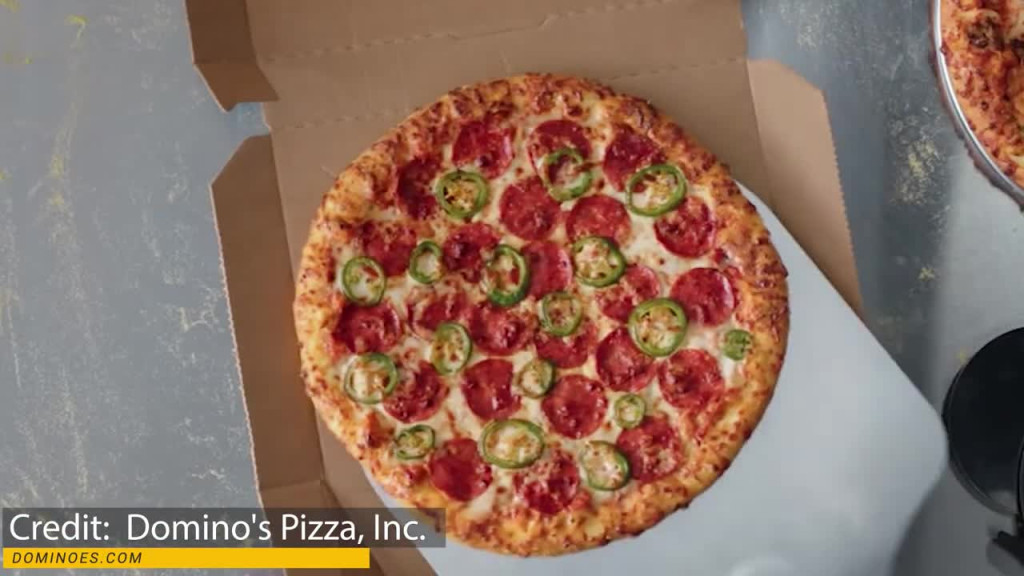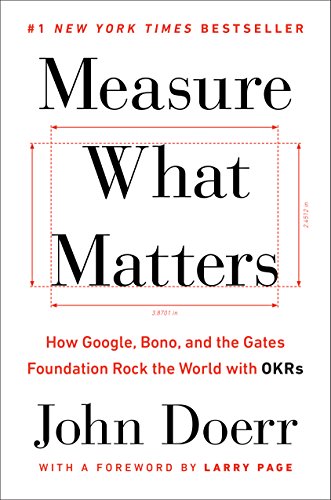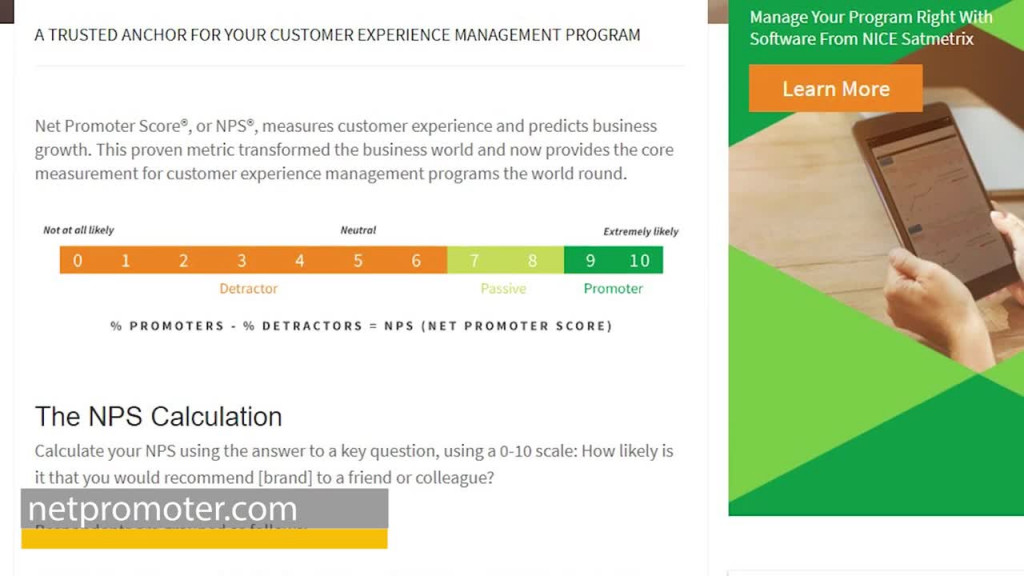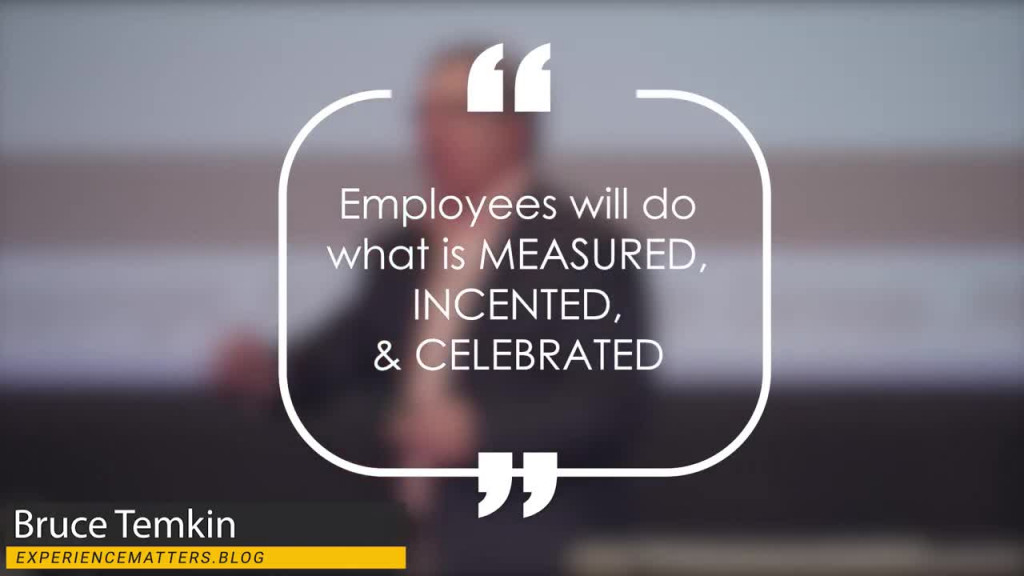Johnny Molson: All too often when we talk about marketing, we are talking about advertising. And while advertising is part of marketing, it’s actually only a sliver of the stuff that needs to be considered. And one of the things you can do right now that’s within your control, and more or less doesn’t cost you any money, is making sure that your customers are having a good experience with your business.
To talk about that today we’ll go to Halifax, Nova Scotia, where Ryan Chute is going to remind us that if your sales people are being measured by the sales and the dollars they bring in, that may actually be working against your company. Tom Wanek is in the Cleveland area and he’s going to talk about three things that you measure right now to make sure that your employees are treating your customers right. And when you do that, sales will come in. Let’s start in Canada, though, with Ryan Chute and businesses are coming back online. Customers are coming back into stores. So what are businesses doing right now?
Ryan Chute: I think a lot of folks are trying to make sure that they’re within compliance to what their state or provincial laws are dictating, as far as reopening and things like that go. They’re trying to do what’s right. And ultimately that’s valid and important. But it’s also important to make sure that we’re doing what’s right for our employees when it comes to time off and being flexible. And those intentions will pass along through to the customer. There’s going to be all kinds of things like Plexiglas barriers and limited office interaction, spacing issues that you have to deal with. But really what it comes down to is being a company that’s compassionate. That’s helping their employees as much as their customers achieve success and results, whatever those positive things are. Being trustworthy. And frankly, being grateful.
Johnny Molson: Tom, you have said in the past that customer experience isn’t just an idea “we should treat our customers right”. But really, it’s more of a discipline and something you’ve got to deliberately do. Expand on that. I mean, tell me a little more about what you mean by that.
Tom Wanek: Yes, one of my biggest pet peeves is thinking that you could shoot from the hip pocket and just have a great customer experience. That you could just print out these “I love my customer” mugs and t shirts and, you know, say “let’s just delight the customer”. It just doesn’t work like that because what delights you and what delights Ryan is vastly different than what might delight me as a customer. And so we have to take that into account.
I have a client that is a jeweler and they’ve preached to all the sales staff, “Delight the customer. Delight the customer.” And so that was left to the individual’s interpretation. And it created a sales disaster. Sales declined because what the business owner found is we had these long lines of customers waiting. Because we were taking an abundant amount of time serving beverages and food and chatting up the customer, when all they really wanted was to get in and out of the store. And so they were losing sales because of “delighting the customer” and they didn’t define that for the sales staff.
Johnny Molson: And these two things, which you’re both saying, tie in together so nicely with each other. Because people are sort of tiptoeing around the corner and saying, “Is it safe to come back in now?” You’ve got to be very deliberate in how you tell them that it is safe to come back in now. I know we’re past the hump of freaking everybody out and saying, “My God, isn’t it scary out there?”

“But after leaving our 450 degree ovens, the only hands that touch them are yours.”
So what are some of the shoulds and shouldn’ts, Ryan? How do I word this… I was struck by the Domino’s commercial that is now promising that they don’t touch your pizza after it comes out of the oven.
That’s one of those things like “What the hell were you doing before?” Right? And so where’s that little bridge between welcoming them back in and not freaking them out?
Ryan Chute: I think it’s quite reasonable at this point in time to take the time to do a touchpoint assessment. And really just look at every spot where you’re judging the customer: from the CSR, taking that phone call to book an appointment, through to people being received through a retail door as traffic. In Canada, for example, they have to actually log everyone that’s coming in and going out so that there’s X amount of people that are in the store at any given time. Some stores have mask policies. Some stores are asking for compliance when it comes to a six foot distancing. Some aren’t. Ultimately, those are the kind of key elements of what we’re dealing with here today. But all of those things translate into “the everyday.”.
And good principle is good principle. Ultimately, if we look at the touch points and we see where can we make it easier, smoother, faster, more comfortable for the customer to get to the point of purchase — we’re winning. Time is a test, in my opinion. And ultimately the customer is gauging us on whether we’re being successful or not with the commitment that they’ve given us with their time. People are busy. And ultimately, if we don’t have a product that’s any different than anything else, we are the difference. The only reason they’re going to buy from us is us. You go into a car dealership, you can buy that car at every single dealership. So what makes you different? How we treat the people that we receive and our actions are going to speak much louder than than our words. We can say all day long, post all kinds of great videos and all kinds of wonderful things that of demonstrate our worth. But the proof is in the pudding, frankly. Let’s get out there and do the things that are right, both socially responsible for what we’re dealing with now with pandemic issues, but just in general principles.
Tom and I had a nice conversation a number of months back regarding the the idea of not every touchpoint is an infinite delight factor. And just as he says with his with his jewelry customer, everything isn’t about being delightful. It’s about being exactly what the customer wants. And that’s certainly lives in the in the mind of the customer. But remembering that by the time we’re done with the customer, we need to find something that is going to surprise and delight them. It’s the linchpin. It’s the difference between a good review and a great review, a sincere review, a loyal customer and all the things that matter to the company in the first place, which is to stand head and shoulders above their competition so they get repeat business.
Johnny Molson: Tom, you’re nodding your head chime in there.
Tom Wanek: You know, something Ryan said that was was really profound. He said that the right principles are the right principles. Good principles are good principles, whether you’re in a situation like we’re in now or just talk about normal times. You know, go back to the basics. One of the things that you should be doing no matter what is actively listening to your customers. Getting on the phones, listening to what they’re saying, the questions that they’re asking boots on the ground. Get in the showroom. Ride alongs with your technicians. Whatever it takes to listen to the customers and get their direct feedback. Oh, man. That alone could lead to such profound insights as to what to do to to improve your products and services. Such a basic thing.
Johnny Molson: Yeah. And I think we’re going to be surprised, if we’re not already picking up on it, of how much isn’t going to change. I mean, some of those you say — you use the word “basics”. But it’s stuff that you probably should’ve been doing anyway. And now you have the opportunity to really up your game.
Tom Wanek: That’s right. I mean, these are fundamentals for a reason, right? Just what Ryan said, go back to the basics. Do the fundamentals, do the good principles that you should have been doing anyways and you’ll be light years ahead of the competition. That’s how you get through things like this. You don’t go look for looking for a red herring or that special little shiny object that’s going to take you to the promised land. It’s about fundamentals.
Johnny Molson: To that end, and Ryan you can speak to this. What should businesses be measuring? We love throwing around the acronym KPIs. And everybody has a different definition of what that means or what that should mean. Ultimately, what does a business measure to see? Is this thing working, am I connecting with my customers?
 Ryan Chute: That’s something that we’ve been talking a lot about with a couple of clients recently. And you know, there’s a couple of things that come out of that. One is KPI as it stands for Key Performance Indicators. And the other is metrics that matter, a book that was written a number of years ago, but still very relevant today, trying to remember who the author is but it’s it’s evading me. Two things that it boils down to. One, a key performance indicator is an indicator, not a whipping stone. Right? So it’s not one of those things where we’re “Hahah! We’ve caught you. You’re under par. It’s time to axe you and take you to the guillotine.” And the metrics that matter are metrics that revolve around actions and behaviors. Right?
Ryan Chute: That’s something that we’ve been talking a lot about with a couple of clients recently. And you know, there’s a couple of things that come out of that. One is KPI as it stands for Key Performance Indicators. And the other is metrics that matter, a book that was written a number of years ago, but still very relevant today, trying to remember who the author is but it’s it’s evading me. Two things that it boils down to. One, a key performance indicator is an indicator, not a whipping stone. Right? So it’s not one of those things where we’re “Hahah! We’ve caught you. You’re under par. It’s time to axe you and take you to the guillotine.” And the metrics that matter are metrics that revolve around actions and behaviors. Right?
So we get really obsessed with results in most businesses. Because usually somebody above us — in the automotive world, the OEM is obsessed about the result. If it’s in furniture, it’s going to be the manufacturers. If it’s a franchisee, it’s going to obviously be the franchise offices. All of these things where we’re just fixated on the result. So we’re just trying to get to the results come hell or high water, when in reality good leadership — not management of the task, but leadership of the people — comes down to are you doing the behaviors and actions necessary to achieve the result that you want? And by the time we’re finished, that result is a historical number. Did we achieve it above the bar or below the bar?
Steve Rae, one of our partners, when he went into the radio station and started doing things the Wizard of Ad ways. One of the first things that he did was he eliminated sales quotas 100%. Because he found that it changed the disposition of the people who are on commission who typically to do whatever it took to get the sale done, not do what was right to make sure the customer won. So there’s a big difference between the two. If we just stuck to our our behaviors and actions, we would see that we could maneuver off of that. We can also manage that better and we can also train off of that better when we stick to those consistent things that actually help us get over the finish line. And in some cases, a sales quota is just as bad as as anything else in productivity. Daniel Pink writes about it in his book Drives. There’s a video online that speaks about the counter-intuitive strengths of what we see as incentive. But you know, I’ve seen plenty of salespeople hit their target and they go on full stop and check out for the rest of the month. So are we really gaining or or are we really kind of holding ourselves back?
Johnny Molson: And that point right there, I think is hugely important. This idea that the number is the result of the effort that you put in. And it’s true with anything. I mean, you want to lose weight, you focus on eating right and walking around the block a couple of times. We know that this is true. And yet we still don’t do it. Why?
Ryan Chute: That’s a great question. The first thing I think about — what Ryan was saying was making sure that we’re measuring the right things and trying to achieve the result that we want to achieve. So within that, there’s this alignment issue. And Johnny, you know a lot of times we get on on the phone with clients and they talk about being customer centric. Yet at the end of the day, when you ask them, “Well, in your team meetings, what are you measuring that points to customer centricity?” And there is crickets, “We don’t measure anything.” Well, you can’t improve what you do not measure. There’s nothing in there tying in customer centricity, well what are you going to expect? And everything is based on sales. Like Ryan was saying, sell, sell, sell. And you just got to sit down and really look at “You know, what type of company are we? Are we customer centric? Are we sales centric? Operationally efficient? What are we trying to achieve? What do we need to measure?”
And the other thing as Ryan was talking that made me think is, a lot of times we too like to just measure things and we like to collect data, but we don’t take action with the data. We just collect it. So if you’re going to collect data and you’re going to measure things, be sure that you’re going to take action with that feedback that you get.
Johnny Molson: How does a business then measure the things that maybe don’t go on a spreadsheet? The squishier things of doing right by the customer?
Tom Wanek: Well, I mean, there’s a there’s a number of ways go about it. The first thing that pops up is the ubiquitous NPS or Net Promoter Score. Which is an indicator of advocacy. It’s a Likert scale from 0 to 10. And it’s a basic single question you ask a customer, “How likely are you to refer this brand to a friend or a colleague?” And zero: not likely at all. Ten: very likely. And then there is there is a formula that NPS uses to separate the the detractors from the passives and those who are the advocates and promoters of that brand. So that’s probably the most common way. But there are others. I mean, there’s a suite of different customer experience metrics that an organization can use to really gauge how effective they are at their experience that they provide.

Ryan Chute: For me, it’s on the front line. I’m speaking to my managers and I’m telling them to put down the paperwork. To stand up. Go walk around the showroom to listen to people, to actually hear what they’re saying. To get that feedback and be engaged in the sales process so that you have a clear understanding of where things went sideways. There’s no question that they never talk to a guy during a sale. Now I have them talking to the guy as he’s building the deal. I have them talking to the guy if he runs into a “no chance of closing the deal today.” I have him talking to the customer before he’s basically wrapping up the call. They’re seeing an increase of closing upwards of 30 percent because they’re engaged in the sales process. Now, instead of just standing back and hoping that their guys are going to do exactly what they need them to do, you support that with some really simple word tracks that you can trust that they’re going to go out there and do the right thing.
And I say word tracks, not unlike our brandable chunks. Those elements, those beliefs statements, those stances that we have that really do drive home a consistent delivery of what it is we do. So you’re going to get great results out of your staff if you teach them in a way that’s simple enough for them to understand it, in a frequency that’s high enough for them to remember, and to make sure that they’re going out there and doing the right thing every single day. And starting from the place of intent. Sales is very much about intention.
Johnny Molson: So is it as simple as saying “These are the things that we believe to be true and if we treat our customers this way, sales will surely follow.” So now we’re measuring did you treat the customer this way? Is that the way you put that together?
Ryan Chute: That’s a big part of your system. Now, there’s some technical elements to a sales system as well that follow along certain lines of psychology and neuroscience. But really what it boils down to is we have to program our staff to be consistent with what we believe in. And we have to demonstrate to our staff by our actions as leaders that this is actually how we believe it, and this is actually how we live it. That means that you have to treat your staff the way you want your customers treated. In a way that they’re going to win. You want to treat them with trust and integrity and dignity equally as much with gratitude.
Johnny Molson: And this isn’t a guessing game. I think, Tom, the trick is you got to talk to the customers and work from their perception inward. Talk a little bit more about that because you had you mentioned customer centricity and sales centricity and operationally efficient. Go a little bit deeper on customer centricity.
 Tom Wanek: Yeah. I mean, it dovetails nicely into what Ryan is saying. There’s two things that I could draw from and comment on that Ryan said beautifully. And the first thing is taking an outside in perspective, which is that we’re going to go and view our organization, our product category from the outside in from the customer’s perspective inward. Most companies don’t do that. Of course, they take an inside out perspective and they focus on building products and services and say, “OK, now who can we sell this to?” So one of the most efficient things that you can do as an organization is get your staff again doing what Ryan talked about. Listening to the customer, hearing what they have to say. You’re going to notice when you do that too, that you’ll get three or four things that develop. Maybe they’re things that you can improve or issues that you need to handle and take care of to fix your experience. But again, I am almost embarrassed to say it, but it’s such an easy thing to do. Get on the front lines or talk those frontline employees, get on the phones yourself, like I said, and get that outside in perspective.
Tom Wanek: Yeah. I mean, it dovetails nicely into what Ryan is saying. There’s two things that I could draw from and comment on that Ryan said beautifully. And the first thing is taking an outside in perspective, which is that we’re going to go and view our organization, our product category from the outside in from the customer’s perspective inward. Most companies don’t do that. Of course, they take an inside out perspective and they focus on building products and services and say, “OK, now who can we sell this to?” So one of the most efficient things that you can do as an organization is get your staff again doing what Ryan talked about. Listening to the customer, hearing what they have to say. You’re going to notice when you do that too, that you’ll get three or four things that develop. Maybe they’re things that you can improve or issues that you need to handle and take care of to fix your experience. But again, I am almost embarrassed to say it, but it’s such an easy thing to do. Get on the front lines or talk those frontline employees, get on the phones yourself, like I said, and get that outside in perspective.
One of the best books I read about this was from Youngme Moon, and I think the book was called Different. And she talked about that a business organization and those working within the organization are the connoisseurs of that business. And when they surveyed the horizon, they see all the subtle little nuances, the asymmetries of that product category. Where the customer is not the connoisseur, they are the novice. And when they survey the horizon, they see shades of gray because they suffer from apathy. They just don’t care like we do. And so that’s why it’s really a necessity to take that outside in perspective and learn what the customer is really thinking and feeling when it comes to your products and services.
The other thing that Ryan said I think is enlightening, is this idea to treat your employees well and they will treat your customers well. I mean, that’s something we call the law of congruent experience. It’s the thing that you could do today to best improve your customer experience is just take care of your customers. Bruce Temkin is perhaps the godfather of experience. He said my favorite quote, “Employees will do what is measured, incented and celebrated.” Employees will do what is measured, incented and celebrated. And if we could just do that and improve our employee engagement, as a byproduct we will improve our customer experience.

Johnny Molson: One last question. Would I be more credible if I was wearing a black shirt right now?
Tom Wanek: One hundred percent. One hundred percent.
Ryan Chute: Yes you would, yeah.
Johnny Molson: I knew I goofed this up. I’m so sorry.
Ryan Chute: It’s all right.
Tom Wanek: It happens, man.
Ryan Chute: There’s always next time, rookie.
Johnny Molson: These are conversations that we’re having with our clients and conversations that we’re having with each other. The stuff normally you’d only hear if you were sitting around the Wizards roundtable. We appreciate you watching. And if you want to get in touch with me or any of the folks on the show today, here are their e-mails.
- Journalism and Great Ads - April 24, 2024
- Ad Fraud: How Much of Today’s Internet Is Fake? - April 12, 2024
- Ad Relevance: The Secret To an Effectively Working Ad - April 3, 2024
- Sales Today or Salience Tomorrow? Yes. - March 14, 2024
- (Anti)Predictions in Marketing for 2024 - January 4, 2024
- The Myth of Marketing Specialists - December 13, 2023
